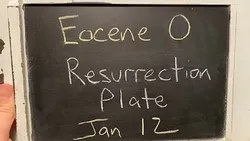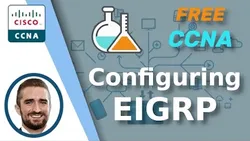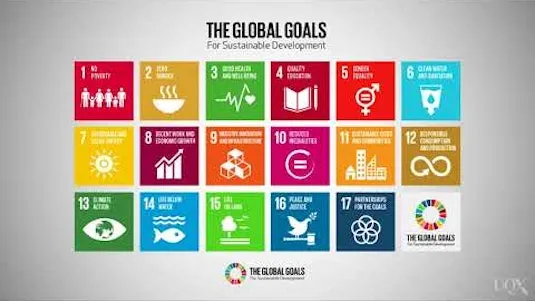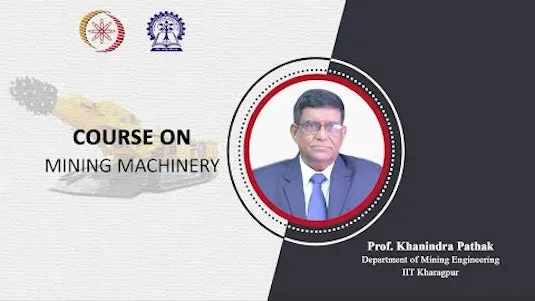
Eocene O - Resurrection Plate w& Spencer Fuston 
Spencer Fuston presented a lecture on the Eocene O - Resurrection Plate, discussing the differences between offshore and onshore schedules, magma clusters near trenches, translation slabs and plates, seismic tomography, and the Alaska and Cascadia Slab Map. He also discussed the Yukon-Kuskokwim Plateau and its implications for the region. ▼
ADVERTISEMENT
Course Feature
![]() Cost:
Cost:
Free
![]() Provider:
Provider:
Youtube
![]() Certificate:
Certificate:
Paid Certification
![]() Language:
Language:
English
![]() Start Date:
Start Date:
On-Demand
Course Overview
❗The content presented here is sourced directly from Youtube platform. For comprehensive course details, including enrollment information, simply click on the 'Go to class' link on our website.
Updated in [February 21st, 2023]
Learners can learn about the Eocene O-Resurrection Plate and Spencer Fuston from this course. They will gain an understanding of the offshore vs onshore differences, the schedule and Eocene papers, near trench magma clusters, Chugach translation, slabs and plates, seismic tomography, Alaska and Cascadia slab map, Yukon slab, detached slabs, and the Resurrection unfolded slab plate reconstruction animation. They will also learn why there is no plate under British Columbia, why the Resurrection Plate story was so popular, and what future papers on lower mantle slabs and dangling slabs under Idaho will look like. Additionally, learners will gain an understanding of NTM locations and ages, and be able to ask questions to Spencer. Finally, they will gain an appreciation for the fossils and palaeontology associated with the Eocene O-Resurrection Plate.
[Applications]
After taking this course, students can apply their knowledge by researching the Resurrection Plate and its implications for plate tectonics. They can also explore the seismic tomography of Alaska and Cascadia, as well as the Yukon Slab. Additionally, they can investigate the detached slabs and the Resurrection Unfolded Slab Plate Reconstruction Animation. Furthermore, they can research why there is no plate under British Columbia and why the Resurrection Plate story was so popular. Finally, they can look into the future papers on lower mantle slabs and the dangling slab under Idaho.
[Career Paths]
1. Geoscientist: Geoscientists study the physical aspects of the Earth, such as its composition, structure, and processes, to learn about its history and future. They use a variety of techniques, such as seismic surveys, geochemical analysis, and remote sensing, to collect data and interpret it. Geoscientists are in high demand in the energy industry, as well as in environmental and engineering fields.
2. Geophysicist: Geophysicists use physical principles to study the Earth's interior and its relationship to the surface. They use a variety of techniques, such as seismic surveys, gravity measurements, and magnetic surveys, to collect data and interpret it. Geophysicists are in high demand in the energy industry, as well as in environmental and engineering fields.
3. Geotechnical Engineer: Geotechnical engineers use their knowledge of the Earth's physical properties to design and construct structures that are safe and stable. They use a variety of techniques, such as soil testing, laboratory analysis, and computer modeling, to collect data and interpret it. Geotechnical engineers are in high demand in the construction industry, as well as in environmental and engineering fields.
4. Petroleum Geologist: Petroleum geologists use their knowledge of the Earth's physical properties to locate and develop oil and gas reserves. They use a variety of techniques, such as seismic surveys, core sampling, and geochemical analysis, to collect data and interpret it. Petroleum geologists are in high demand in the energy industry, as well as in environmental and engineering fields.
[Education Paths]
The education paths recommended to learners from this course are:
1. Geology: Geology is the study of the Earth, its composition, structure, and history. It is a rapidly developing field, with new technologies and techniques being developed all the time. Geologists use a variety of tools to study the Earth, including seismic tomography, geochemical analysis, and remote sensing. Geologists are employed in a variety of industries, including oil and gas, mining, and environmental protection.
2. Geophysics: Geophysics is the study of the physical properties of the Earth, such as its gravity, magnetic fields, and seismic activity. Geophysicists use a variety of tools to study the Earth, including seismic tomography, geochemical analysis, and remote sensing. Geophysicists are employed in a variety of industries, including oil and gas, mining, and environmental protection.
3. Geochemistry: Geochemistry is the study of the chemical composition of the Earth. It is a rapidly developing field, with new technologies and techniques being developed all the time. Geochemists use a variety of tools to study the Earth, including seismic tomography, geochemical analysis, and remote sensing. Geochemists are employed in a variety of industries, including oil and gas, mining, and environmental protection.
4. Earth Science: Earth Science is the study of the Earth and its environment. It is a rapidly developing field, with new technologies and techniques being developed all the time. Earth scientists use a variety of tools to study the Earth, including seismic tomography, geochemical analysis, and remote sensing. Earth scientists are employed in a variety of industries, including oil and gas, mining, and environmental protection.
Course Provider

Provider Youtube's Stats at AZClass
Discussion and Reviews
0.0 (Based on 0 reviews)
Explore Similar Online Courses

Blockchain 101 Beginners Free Course Bootcamp Cryptocurrency

Free CCNA Configuring EIGRP Day 25 Lab CCNA 200-301 Complete Course

Python for Informatics: Exploring Information

Social Network Analysis

Introduction to Systematic Review and Meta-Analysis

The Analytics Edge

DCO042 - Python For Informatics

Causal Diagrams: Draw Your Assumptions Before Your Conclusions

Whole genome sequencing of bacterial genomes - tools and applications

Mining Engineering

The Future of Mining?


Start your review of Eocene O - Resurrection Plate w& Spencer Fuston